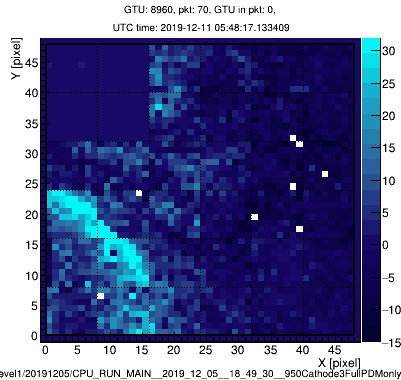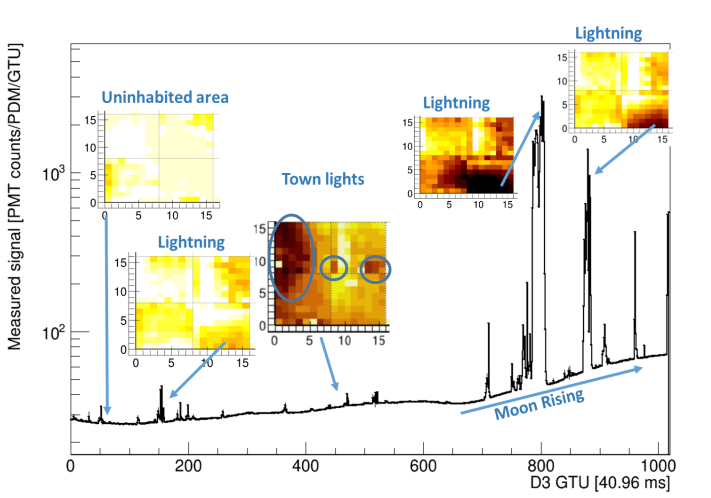Focal Surface Mechanical Structure
The Focal Surface (FS) of JEM-EUSO is composed by a grid of ~5,000 Multi Anode Photo Multiplier Hamamatsu M64 Tubes (MAPMT) arranged in modular support structures, Elementary Cells (EC) and Photo Detector Modules (PDM), that cover all the surface to collect the light of the optical system.
The design of FS and PDM mechanics has been studied and developed at INFN-Frascati National Laboratories.
The focal surface is a portion of sphere of radius 2505 mm (determined by the optics), inserted within an in-plane section 2650 mm × 1900 mm (allowed by the HTV Exposed Pallet dimensions).
An extensive use of CAD (Computer Aided Design, CATIA v.5) has been employed to study the Focal Surface geometry and to analyze different PDMs distributions in order to maximize their number within the allocated space.
The adopted configuration consists of a total of 137 PDMs lying in 11 rows along the parallels of the abovementioned sphere, with one PDM exactly located at the center of FS geometry.
Each PDM is composed by 3×3 Elementary Cells (EC) and each EC is composed by 2×2 MAPMTs. The mechanical structure of the PDM is designed in order to place in a top frame the 9 ECs on a spherical surface in the same way as for the overall geometry. A bottom frame completes the PDM structure to accommodate the electronic boards.
FEM (Finite Element Method) analyses have been worked out in order to evaluate the consistency of the structure and optimize its mass (minimize) and first natural frequency (maximize). PDM mechanical structures, once connected with fasteners to the main structure, become part of it giving their contribution in terms of rigidity and strength.
The material considered is aluminum alloy 7075-T7351, both for main structure and PDM structure, for its good properties in terms of strength, elongation, crack toughness and machining.
Iterative analysis was employed as well: Modal Analysis, Acoustic and Random Loads evaluation, Load Cases definition, Stresses Analysis, Mass Optimization have been worked out.
Two of the first assembled prototypes of PDMs have been adapted and are presently being used both for EUSO-TA and EUSO-Balloon pathfinders.
Contacts and discussions with Aerospace Companies were started to carry out the studies for the space qualification and verification of the structures.
The activities under study were compliant to a System Engineering Approach and organized in Program Phases typical of the design of a space mission.



